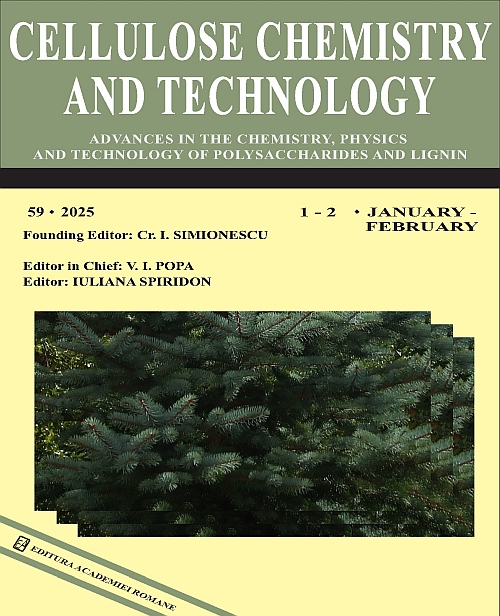|
Title
Comprehensive elucidation of structural and compositional changes in cotton stalks undergoing biodegradation by potent cellulolytic bacteria
Authors
PREETI R. PARMAR, B. K. RAJKUMAR, NAVED MALEK and HIRAL UKANI
Received
September 20, 2024
Published
Volume 59 Issue 1-2 January-February
Keywords
cellulolytic, cotton stalk, CMCase, FPase, Priestia megaterium
Abstract
The present study aimed the exploration of cellulose degrading bacteria as cotton stalk degrader and to characterize the
thus treated cotton stalk at compositional and structural levels. The bacterial strain Priestia megaterium, coded as NAU
WP-1, was identified by its microbial and molecular characteristics and revealed a cellulolytic index of 2.23, CMCase of
0.223 IU/min/mL and FPase of 0.098 IU/min/mL with carboxymethyl cellulose (CMC) medium for 72 h at 30 ± 0.2 ºC.
The cellulolytic potential of the strain was studied to evaluate the degradation of cotton stalk. Biodegradation studies of
cotton stalk revealed the maximum CMCase (0.563 IU/min/mL) and FPase (0.1159 IU/min/mL) activity on the 30th and
25th days, respectively. Composition analysis of Priestia megaterium NAU-WP-1 treated cotton stalk showed reduction
in weight (7.68%), moisture (5.75%), cellulose (43.70%), nitrogen (10.26%), phosphorus (38.64%), potash (9.29%) and
ash (7.79%). Fourier transform infrared spectroscopy (FT-IR) analysis was performed to confirm the structural changes
appearing in the microbially treated cotton stalk sample on the 30th day compared to the control.FT-IR data revealed that
the peaks observed in the control sample at 3361 cm⁻¹ (OH stretching), 2916 cm⁻¹ and 2849 cm⁻¹ (C-H stretching), 1078
cm⁻¹ (C-O stretching), and 1050–1150 cm⁻¹ (C-O-C) either shifted, downward-shifted, or disappeared completely in the
microbially treated sample. These changes indicated modifications in hydroxyl groups, breakdown of carbon-hydrogen
bonds, and alterations in ether linkages within the cellulose structure. Structural modification and hydrogen bond
cleavage were identified as the predominant mechanisms behind the degradation of cotton stalks by P. megaterium NAU
WP-1. Furthermore, UV-spectra analysis showed a significant reduction in the peak at 275 nm, corresponding to the
intact cellulose structure in the treated sample, compared to the control, which further confirmed the enzymatic
breakdown of cellulose by the bacteria. Hence, this study highlights Priestia megaterium NAU-WP-1 as a potential cotton
stalk degrader and underscores the need for further comprehensive studies to explore its application in agricultural residue
management practices.
Link
https://doi.org/10.35812/CelluloseChemTechnol.2025.59.10
|



